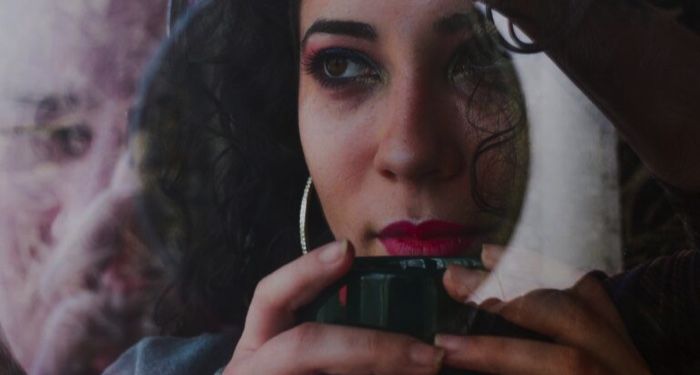
What Does Morally Gray Really Mean?
What are morally gray characters and what about them appeals to audiences so much? Humans aren’t neat and tidy entities that can be fit into boxes, much less contained in them. Dostoevsky wrote in his work The Idiot, “Don’t let us forget that the causes of human actions are usually immeasurably more complex and varied than our subsequent explanations of them.” We, as individuals, aren’t good or evil, nor are the people around us. Our life’s experiences aren’t black and white, and neither is the lens through which we view them. So the intentions, actions, and consequences of our choices cannot simply be black and white. All of us live our lives in varying shades of gray. So why shouldn’t our fictional characters be a reflection of our lived experience?
As we move through life, we face morally ambiguous situations. We feel confused and try to act in accordance with an internal moral compass. However, everyone’s moral compass is tuned differently, and we tend to sway from our moral north in certain situations. When we see heroes on page or on screen, we might admire them but can’t relate to them. Being filled with virtue at all times is not an attainable goal. Similarly, it is hard to understand villains that are portrayed as endlessly self-serving with no redeeming quality. Not only are these extremes unrealistic, but also boring and predictable. If a character is destined to always be in the right or constantly in the wrong, the audience eventually loses interest. That’s where morally gray characters step in. Anyone can tell that they’re not heroes, but it wouldn’t be right to call them villains.
While heroes are admired for their achievements and noble qualities, morally gray characters stray from this definition not just once, but over and over again. They might bend or break rules to fulfil their agenda and attain their goals. They are driven by their insecurities as much as heroes are by their virtues. But there are distinct qualities that differentiate them from villains. Some of them are highlighted in this piece published on Campfire Writing:
Recognition: Morally gray characters can recognize that their choices can cause harm. They might do this before they take an action or in hindsight, but they acknowledge the impact it has on others.
Remorse: Once they recognise the hurt they’ve caused, they experience remorse. This can differentiate them from a truly evil villain that does not experience any.
Redemption: When the character feels that things have gone too far, they seek redemption. They actively try to do some form of damage control.
Some Morally Grey Characters We All Know and (try to) Love
Let’s begin with one of the most popular morally gray characters out there: Batman. He has a strict moral code that he follows, which can be seen with how he refuses to outright kill offenders. But he is hardly the goody-two shoes hero. He is not above breaking the law, damaging property, or doing questionable things on his journey to do the “eventual right thing.” You could try putting him in the morally right box, but you will not be able to check it.
Evelyn Hugo from The Seven Husbands of Evelyn Hugo can be hard to love, but she’s so much harder to hate. Throughout her seven marriages and eventful Hollywood career, Evelyn makes choices that really hurt the people around her. She’s loud, deeply selfish, and disloyal — except in her heart to the only person she’s ever truly loved. In fact, there’s a line in the book that sums up her moral ambiguity perfectly, “She always made sure the bad was outweighed by so much good. I…well, I didn’t do that for her. I made it fifty-fifty. Which is about the cruellest thing you can do to someone you love, give them just enough good to make them stick through a hell of a lot of bad.”
Dorain Gray from Oscar Wilde’s play A Picture of Dorian Grey is so morally gray that he borders on black. His pursuit of beauty starts off as innocent but becomes borderline sinister towards the end. We watch a sweet, loving boy transform into a man who’s singular goal is his own pleasure. Even though Dorian’s outward self remains as beautiful and youthful as ever, his portrait in the attic portrays his karmic downfall.
The Relevance of Morally Grey Characters
Morally gray characters help us initiate difficult conversations. They are usually a product of the world we’ve built and the one we’re trying to survive in. When a character refuses to work within its rules, we question the rules. We try to recognise the ones that protect us and ones that are built on an oppressive system that holds us back. Further, as a character navigates the world with moral ambiguity, it makes room for self-reflection. We recognise ourselves in their confusion. When we stop viewing the world through an absolute lens of good or evil, we recognise its tainted glory.
Some critics raise concern that morally gray characters can lead to a map of blurred morality for young people. However, an audience is not looking to emulate their qualities or justify their behaviour. They can simply serve to reveal the darker shades of gray. They help us pause and re-evaluate, and can even lead to us being more empathetic. Nietzsche wrote, “You have your way. I have my way. As for the right way, the correct way, and the only way, it does not exist.” Morally gray characters can make space for this idea and show us how to practice it. I hope you welcome more morally ambiguous characters into your reading journey and are kinder to yourself when stuck in a morally grey spot.
If you enjoyed reading this, also check out How Reading Changed The Way I See Morality and 9 Morally Grey Main Characters I Can’t Help But Love.









